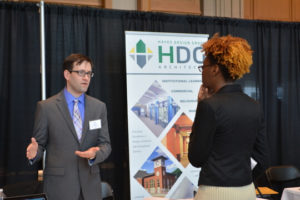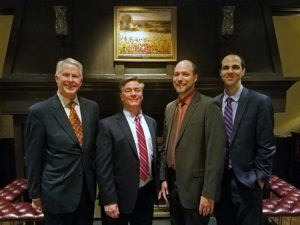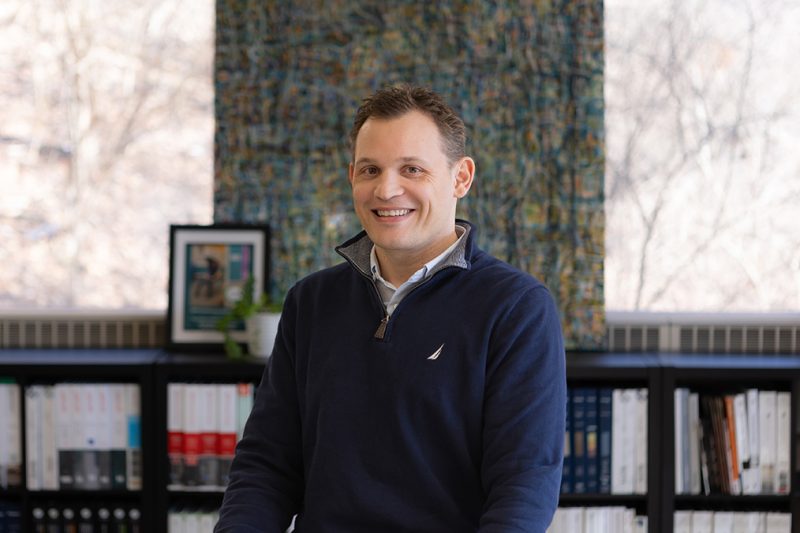
HDG Blog: “The Recession Generation and the Importance of Resiliency”
January 24, 2020
Written by Timothy Reidy, AIA, LEED Green Associate, HDG Project Architect
My father-in-law, Richard (Doc) Larsen, was born in 1934. He paid his way through chiropractor school, married a nurse, and raised eight children in the same small rural town in North Central Pennsylvania. Despite having a modest income in a very rural area, he somehow managed to fully fund all eight (yes eight!) of his children’s higher education at four year colleges. Keep in mind, he was not a CEO of a major corporation. He ran a one-man business out of a home office in a town of roughly 2,000 people.
How did he do it? Well, 1934 was in the midst of the Great Depression. At the beginning of Doc’s life, he learned resilience. He learned the importance of thrift and entrepreneurship, not because it was a good idea, but because it was essential for survival. When the Depression ended, this philosophy guided his entire life and career, and his family reaped the benefit of that hard work, saving, and sacrifice.

Notre Dame Graduation Class of 2010 with Models Each Architecture Graduate Built for their Graduation Caps (a Notre Dame Architecture School Tradition)
I graduated from the Notre Dame School of Architecture in 2010. My class of 49 were among the best and brightest. Many of us had scored higher than 1500 on the SAT entering freshman year. Many of us got nearly straight A’s throughout a rigorous 5-year architecture program. We pulled dozens of all-nighters, directed research, studied internationally, published work, won competitions, designed masterpieces, and were ready to take on the world. The Architecture Career Fair at Notre Dame typically drew 50+ firms from all over the country. Our class’s resumes and portfolios were sure to draw record numbers. Firms would be chomping at the bit to hire us.
But, we graduated in 2010. Only 10 firms came to our career fair that year, and only 2 of them were hiring. There was no chomping at the bit. Instead, our class of brilliant young aspiring architects were begging for scraps at one of the lowest points of the Great Recession. Only 10 of my classmates had a job lined up before graduation. Some of my classmates chose to go to grad school. Some of them quit the profession altogether. I was one of the lucky 10 in my class with a job offer, after fighting to make a wait list, and then driving 2 hours to Chicago for an interview the week that my senior thesis was due. Even then, I was only offered a summer internship (yes, a summer internship as a graduate of a 5-year professional program), which had no guarantee of turning into a full-time position. Many of us worked reduced hours (meaning reduced paychecks) or for minimal hourly wages just to stay in the profession. Some in my class moved far away from home to find even a shred of an architecture job. When my internship ended, there was no full-time position available. I sent out over 100 applications, resulting in only one realistic job offer – in Fairbanks, AK. I braved the harsh winters and darkness for 2 years.
My classmates and I did not waste the recession, though. We did not sit around and wait for the world to restore itself for us. We became licensed and LEED-certified. We honed talents inside and outside of the profession. We taught ourselves every drafting software imaginable. We built our own websites. We crafted beautiful resumes and portfolios. We entered design competitions, we built furniture, we sketched, and we painted. We restored homes. We volunteered. We started side-businesses to fill in financial gaps. We were thrifty. We saved even if we were barely making enough to cover our living expenses. We got married and raised children while studying for exams and working full-time jobs simultaneously. By the time the recession ended, those of us that were still in the profession emerged with something very valuable: resilience. The economy had widdled our generation of architects down, but we were hungry. We were ready to work long hours. We were ready to lead design teams. We were ready to create amazing things.
Now I am on the reverse side of the career fair table. My firm strives to decorate the table with carefully-designed posters, displays, bowls of candy, and swag. We are one of 60 firms at the career fair, fighting for students to come work for us (and yes, we are currently hiring, if you’re interested). The economy is thriving, and jobs are plentiful. LinkedIn advertises dozens of full-time positions in the area every day. Where were all these jobs in 2010 when my brilliant Notre Dame class graduated? What would we have even done with so much abundance?



As I watch the students meander through the career fair, I reflect on Doc Larsen. The depression made him and his family what they are today. If I could trade places and graduate in 2020 instead of 2010, I don’t think I would. The recession made me smarter, more efficient, more entrepreneurial, more balanced between work and home, a better writer, drafter, artist, and a more well-rounded architect. My 2010 classmates are now being listed in top 40-under-40 articles, winning design awards, designing Living Building neighborhoods, spearheading international design teams, and are leading their respective firms into the future. Millennials might not get a lot of credit for our work ethic, but there are many of us refusing to follow that stereotype. I am confident that my recession-generation of architects is going to lead the profession someday for one very important reason: we are resilient.

The Author:
Timothy Reidy, AIA, LEED Green Associate – Project Architect, Hayes Design Group Architects








MK Harby
Thanks Tim. You’re a great brother-in-law. We appreciate the story about Dad.